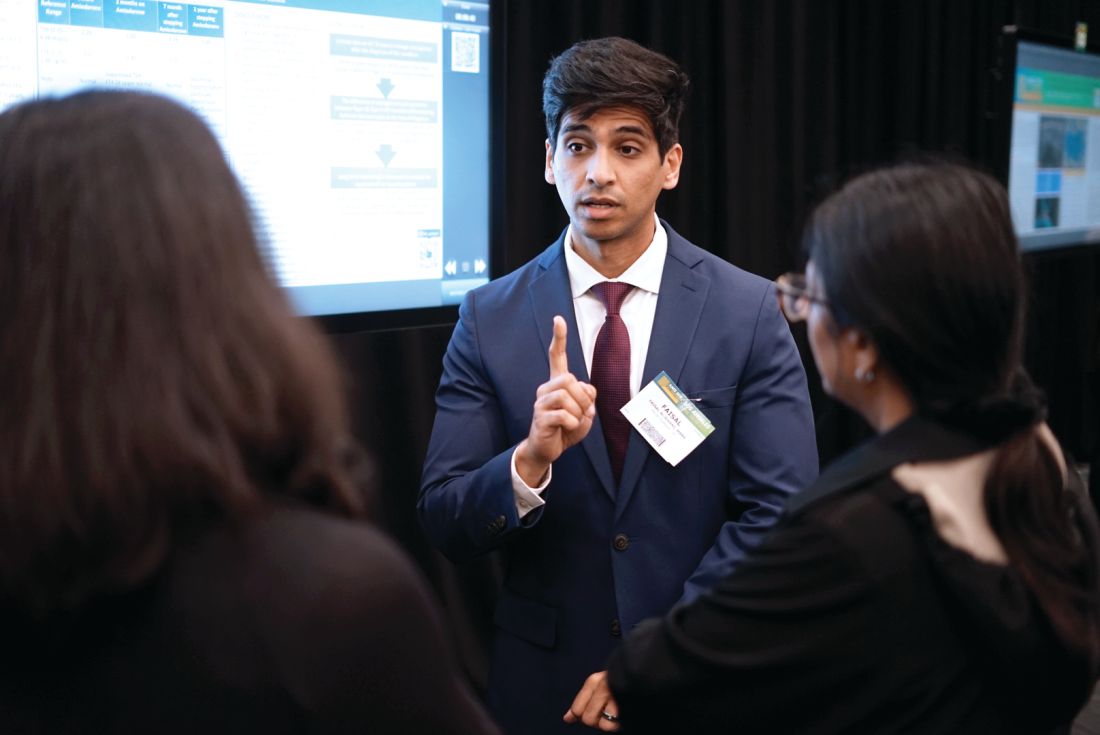LOS ANGELES – The 69-year-old woman with a history of type 2 diabetes had persistent hypoglycemia despite treatment with hydrocortisone, dextrose, and glucagon. Doctors in South Carolina worried about insulinoma and planned to launch an intra-arterial calcium stimulation test. But the medical team wasn’t quite certain it had the correct diagnosis.
Then along came a suspicious nurse who uncovered the truth: The patient had used syringes and vials of insulin socked away in a cosmetics bag. The diagnosis? An unusual, but not entirely rare, case of factitious hypoglycemia. That doesn’t mean her condition was fictional. Instead, it means she created it herself.
It was a learning experience for endocrinologist Faisal Aljehani, MBBS, a first-year fellow at the Medical University of South Carolina, Charleston, who reported the case in a poster at the annual scientific and clinical congress of the American Association of Clinical Endocrinologists. “Factitious disorders sometimes are underdiagnosed,” he said in an interview before his presentation. “If you don’t really keep it in the back of your mind, most people would miss it.”In this case, he said, “the challenge with the patient was that she was denying insulin use very firmly,” and her demeanor didn’t suggest she was lying or had a mental illness. “If you saw the lady, you’d believe her.”
The patient presented with glucose levels that were repeatedly less than 40 mg/dL even though medical personnel fed her and gave her glucose. Her insulin level was high.
“The suspicion was that something in her body was producing insulin or she [was] giving herself or someone from her family was injecting her with insulin,” Dr. Aljehani said. “She denied that she was using insulin and said the last time she had used it was about 3 months earlier. Her husband and multiple family members confirmed the story.”
The results of a C-peptide test, however, suggested she was taking insulin herself. But it wasn’t conclusive.
Nurses monitored the patient during her stay of about 2 weeks. “They were keeping a good eye on her all the time, but nobody noticed anything suspicious. Then, probably 2 or 3 days before the discharge, one of the nurses had noted the patient gave her husband a bag. The nurse was able to take a look inside the bag, and she found empty insulin vials and syringes.”
The patient and her husband still denied that she was taking insulin. A psychiatric examination suggested the patient had a dissociative identity disorder and wasn’t aware she was giving herself insulin, he said.
If the patient’s insulin use hadn’t been discovered, Dr. Aljehani said, the next steps could have included more invasive testing and, potentially, removal of the pancreas.
Factitious hypoglycemia has a long history. The first case appeared in 1927, not long after the discovery of insulin, endocrinologist F.J. Service, MD, PhD, an emeritus professor of medicine at the Mayo Clinic, said in an interview.
Dr. Service, who has written about factitious hypoglycemia, offered these tips about diagnosis and treatment:
- In every patient, he said, do a drug screen for sulfonylureas. “Now that we have multiple classes of diabetes drugs, most of which have a risk for hypoglycemia, one has to have a lab capable of measuring all of them. And that is not easy. It’s not just ‘draw the blood and send to your corner lab.’ ”
- Patients with factitious hypoglycemia don’t tend to have predictable dips in blood sugar during fasting or after meals. Instead, their symptoms are chaotic. “It all depends on when they’re taking [insulin],” he said.
- Patients with factitious hypoglycemia don’t seem ill, but those with insulinomas do. “Patients with insulinomas are totally incapable of living normal lives. They’re incapacitated. Their lives are so disrupted that some of them need ‘babysitters’,” Dr. Service said. If they “get the tumor removed, they are cured. Then they are back to the normal life.”
- Beware that patients may not realize they’re taking a medication that causes factitious hypoglycemia. It’s common, Dr. Service said, for a patient to accidentally take his or her spouse’s medication because of a mix-up.
Ultimately, the goal is to catch factitious hypoglycemia in time. Some physicians haven’t been so fortunate. “They only get to the right answer,” he said, “after the patient has recovered from surgery.”


